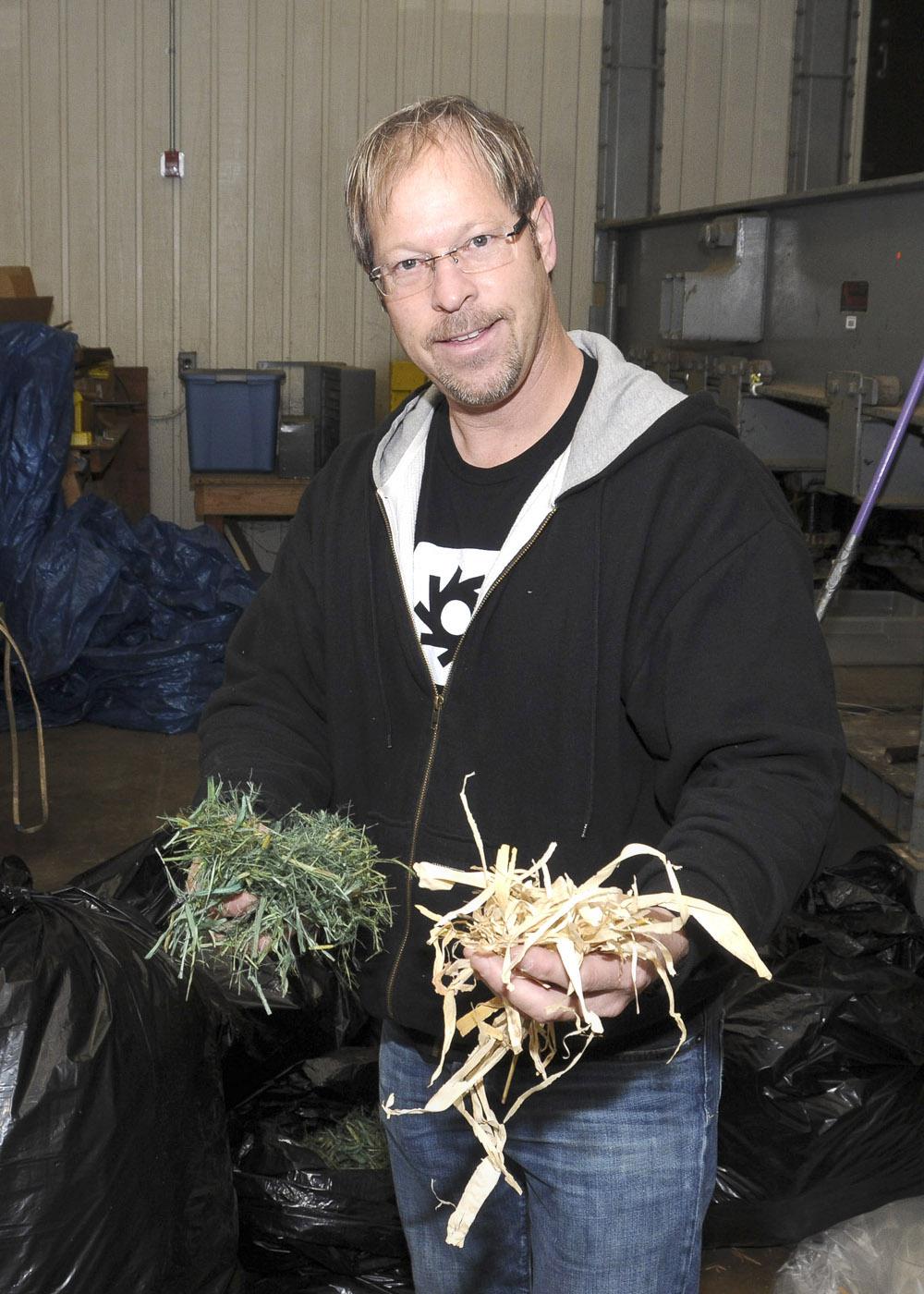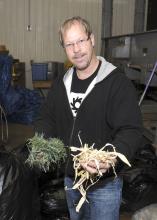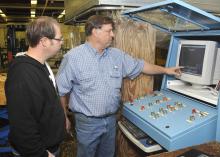Information Possibly Outdated
The information presented on this page was originally released on March 8, 2012. It may not be outdated, but please search our site for more current information. If you plan to quote or reference this information in a publication, please check with the Extension specialist or author before proceeding.
MSU's kenaf research developed into products
MISSISSIPPI STATE -- A fibrous plant researched at Mississippi State University may end up at the Olympics in the form of a specialty gun stock.
“We’re exploring how to make a commercial product out of an agricultural byproduct and kenaf, a quick-growing plant,” said Dan Seale, forest products professor in MSU’s Forest and Wildlife Research Center.
Seale and researchers in the FWRC’s Department of Forest Products are working with Lane Segerstrom of Corn Board Manufacturing Inc., or CBMI, and his product development team to test a unique mix of kenaf and corn stover that can be pressed into a board useful for a variety of purposes, including gun stocks.
“We’ve tried a number of different resins, pressing to a number of different densities, and now we’re zeroing in on a density that will produce properties competitive with commercially available products,” Seale said. “It’s like making wood cookies. We’re developing and testing recipes, and we’ll develop product recipes for each niche market. Our manufacturing expertise and specialized equipment will help CBMI figure out what they will need before they buy their own presses and start production.”
Kenaf is a fibrous plant somewhat similar to bamboo that grows as tall as 10 feet and has a woody base up to about 4 inches across. MSU licensed its patented kenaf board production technologies to Segerstrom in January 2011, and research has been ongoing, said Chase Kasper, associate director for MSU’s Office of Entrepreneurship and Technology Transfer.
Segerstrom said combining corn stover -- dried corn husks and leaves -- and kenaf fibers will create a better product than either material could offer separately.
“We hope to find increased strength -- a board that will handle more stress,” he said.
When developing new products, small manufacturers are limited in terms of equipment available to test prototypes. Segerstrom overcame that limitation by working with MSU experts to press and test boards for a variety of factors, including density, internal bond and moisture content.
CBMI’s goal is to generate green products for specialty applications and efficiently produce them in small quantities. Ideas include a line of home furnishings, a closet organization system and 100 percent biomass pallets.
“We’re not trying to create a raw good that people buy at a store,” Segerstrom said. “Our goal is to dial in on what type of board is needed for certain products and develop partnerships with companies that want to use renewable, bio-based technologies. For example, we’re working with Huntington Industries to make the greenest couch on the planet.”
Part of Segerstrom’s strategy is to create buzz about the product’s quality. To build excitement about Corn Board – a pressed board made from corn stover -- he developed the Stalk It line of high-end skateboards. He rode a Stalk It longboard into history by setting a Guinness World Record for speed on a towed skateboard at 78.1 miles per hour.
“I’m a big fan of Richard Branson -- I think he understands consumers and does things with flair,” Segerstrom said. “If a CEO will stand behind -- or in this case, on -- his product, and people can see what the product is capable of, then they’ll want it in their products. It’s the wow factor.”
Segerstrom hopes to create that same wow factor for the kenaf-corn board by developing an ultra lightweight gunstock for competitive shooting sports, such as the Olympics.
“The long-term benefit to MSU is showing the world that kenaf is a viable product with a variety of uses,” he said.
Mississippi Agricultural and Forestry Experiment Station and FWRC researchers spent about 12 years studying the commercial usefulness of kenaf fibers. Among the results of this research were three patents, a book on kenaf processing and properties, and a new kenaf variety.




